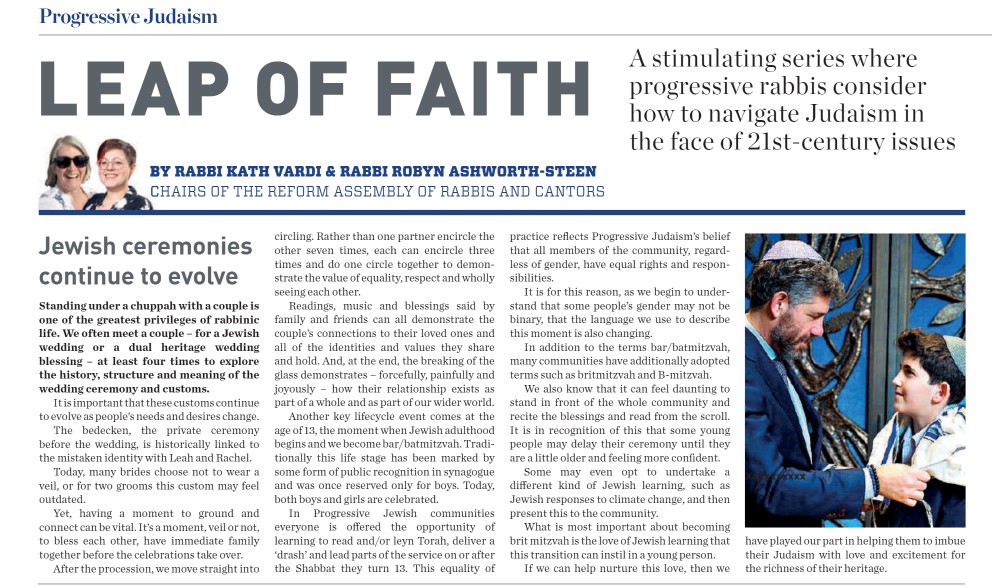Rabbi Kath Vardi and Rabbi Robyn Ashworth-Steen
Chairs of the Reform Assembly of Rabbis and Cantors, writing on behalf of Progressive Judaism
Standing under a chuppah with a couple is one of the greatest privileges of rabbinic life.
We often meet a couple – for a Jewish wedding or a dual heritage wedding blessing – at least four times to explore the history, structure and meaning of the wedding ceremony and customs. It is important that these customs continue to evolve as people’s needs and desires change.
The bedecken, the private ceremony before the wedding, is historically linked to the mistaken identity with Leah and Rachel – as well as the story of Rebecca, who covers herself when she meets Isaac.
Today, many brides choose not to wear a veil, or for two grooms, this custom may feel outdated. Yet, having a moment to ground and connect can be vital. It’s a moment, veil or not, to bless each other, have immediate family together before the celebrations take over.
After the procession, we move straight into circling. Rather than one partner encircle the other seven times, each can encircle three times and do one circle together to demonstrate the value of equality, respect and wholly seeing each other.
Readings, music and blessings said by family and friends can all demonstrate the couple’s connections to their loved ones and all of the identities and values they share and hold.
And, at the end, the breaking of the glass demonstrates – forcefully, painfully and joyously – how their relationship exists as part of a whole and as part of our wider world.
Another key lifecycle event comes is at the age of 13, the moment when Jewish adulthood begins and we become Bar/Bat Mitzvah.
Traditionally this life stage has been marked by some form of public recognition in synagogue and was once reserved only for boys.
Today, both boys and girls are celebrated. In Progressive Jewish communities all genders are offered the opportunity of learning to read and/or leyn Torah, deliver a ‘drash’ and lead parts of the service on, or after, the Shabbat they turn 13.
This equality of practice reflects Progressive Judaism’s belief that all members of the community, regardless of gender, have equal rights and responsibilities.
It is for this reason, as we begin to understand that some people’s gender may not be binary, that the language we use to describe this moment is also changing. In addition to the terms Bar/Bat Mitzvah many communities have additionally adopted terms such as Brit Mitzvah and B Mitzvah.
We also know, it can feel daunting to stand in front of the whole community and recite the blessings and to read from the scroll. It is in recognition of this that some young people may delay their ceremony until they are a little older and feeling more confident. Some may even opt to undertake a different kind of Jewish learning, such as Jewish responses to climate change, and then present this to the community.
What is most important about becoming Brit Mitzvah is the love of Jewish learning that this transition can instil in a young person. If we can help nurture this love, then we have played our part in helping them to imbue their Judaism with a love and excitement for the richness of their heritage.
- This article originally appeared in The Jewish News. You can read it here.

